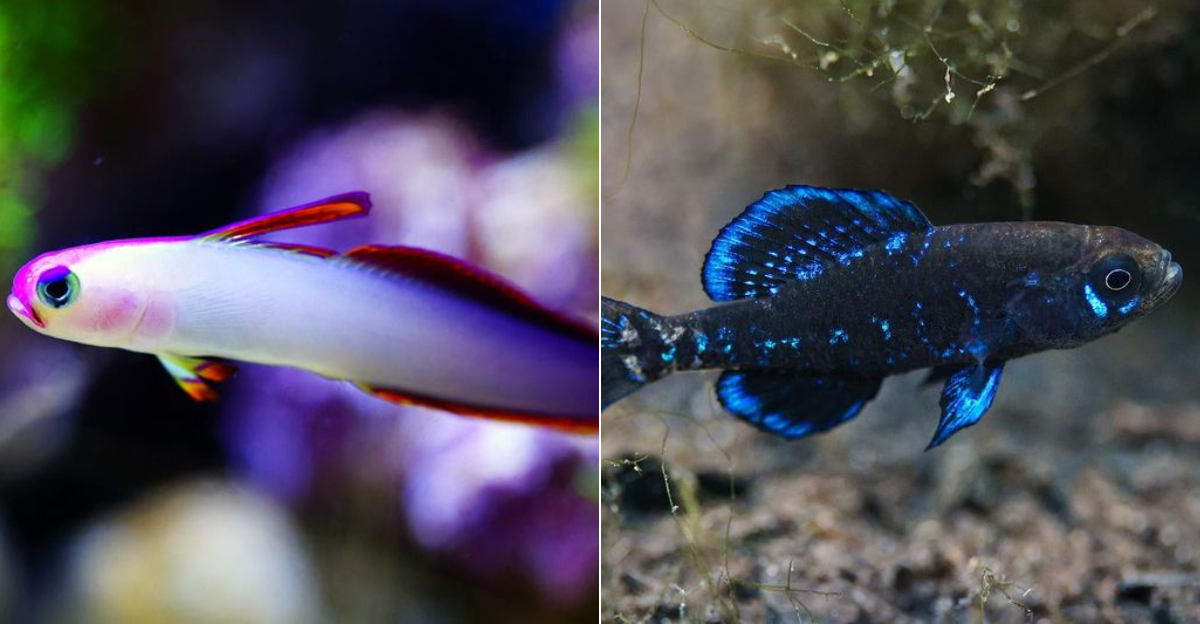Setting up a home aquarium in Florida? It’s a unique opportunity to showcase some incredible fish species!
Let me tell you right now: the Sunshine State’s warm climate makes it ideal for hosting a variety of colorful and fascinating underwater friends.
Whether you’re a beginner or seasoned fish keeper, these ten species will bring life to your aquatic display while thriving in Florida’s conditions.
1. Butterfly Peacock Bass: The Aquarium Showstopper
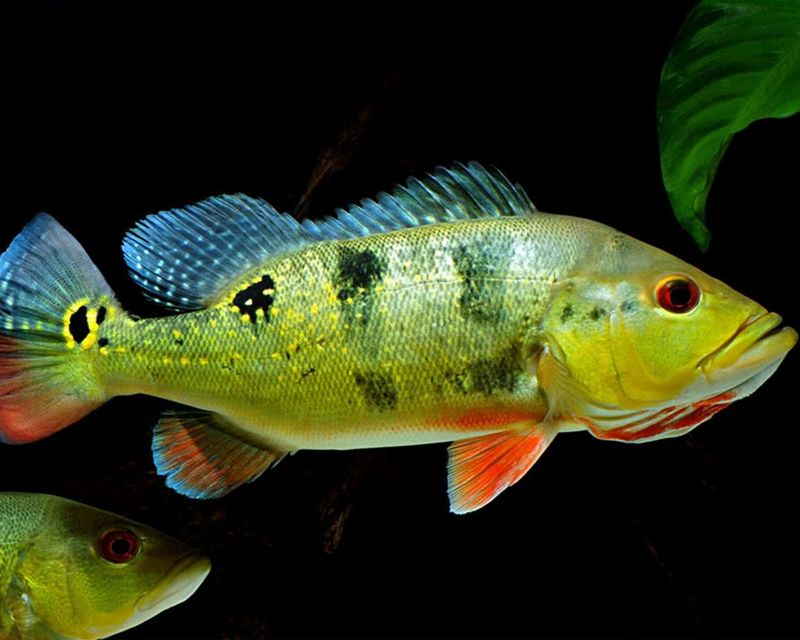
Stunning doesn’t begin to describe the Butterfly Peacock Bass.
These cichlids grow up to 12 inches in home aquariums, requiring spacious tanks of at least 70 gallons. Their predatory nature means they’ll happily gobble up smaller tank mates, so pair them with similarly sized fish.
Native to the Amazon Basin but well-adapted to Florida waters, they prefer temperatures between 75-82°F. Feed them a protein-rich diet including pellets, frozen foods, and occasional live treats for optimal health and coloration.
2. Mayan Cichlid: The Feisty Redhead
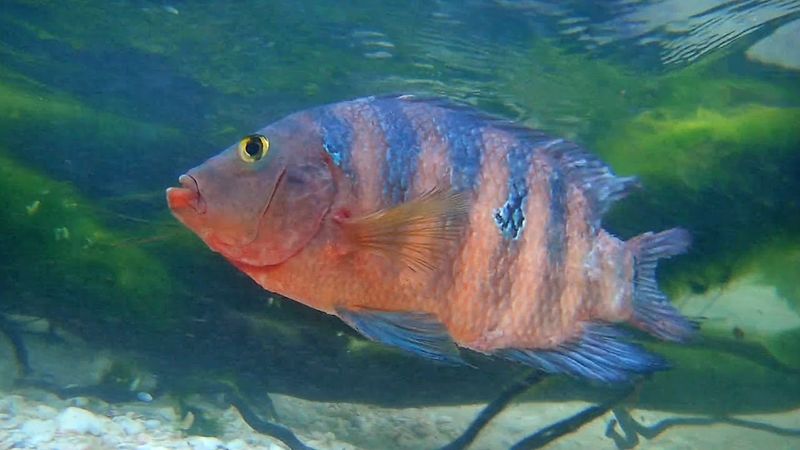
The orange-red coloration of Mayan Cichlids earned them the nickname ‘atomic sunbursts’ among my fish-keeping buddies. These territorial characters put on quite a show during feeding time!
Hardy and adaptable, they’ve established populations throughout Florida’s freshwater systems since their introduction. They thrive in tanks with plenty of rocks and caves where they can establish territory and hide when feeling threatened.
Reaching about 8-10 inches in captivity, these omnivores enjoy a varied diet of quality pellets, frozen foods, and occasional plant matter.
3. Blue Tilapia: The Gentle Giant
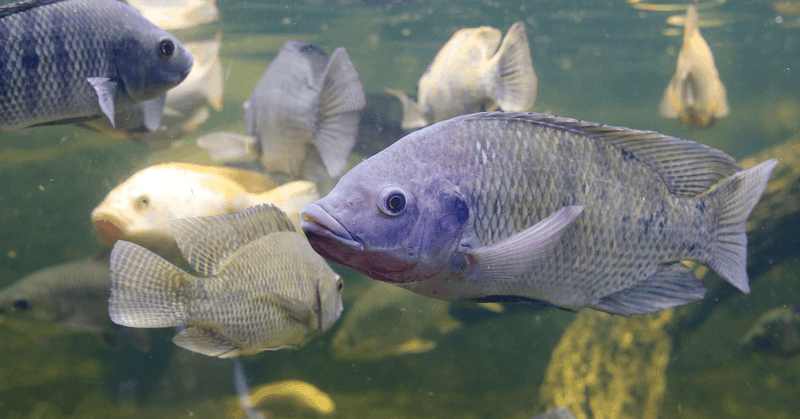
Blue Tilapia might not win beauty contests, but their peaceful nature makes them perfect community tank residents.
These fish sport a subtle blue-gray coloration that intensifies during breeding seasons. Originating from North Africa but now established in Florida waters, they’re incredibly hardy and tolerate a wide range of water conditions.
They’ll happily munch on algae wafers, blanched vegetables, and quality flake foods. Their habit of sifting substrate means they naturally help keep your tank floor clean – a bonus feature for any aquarist!
4. Clown Featherback: The Exotic Night Swimmer

Talk about conversation starters! These nocturnal oddities bring a touch of exotic mystery to any tank.
Native to Southeast Asia but established in Florida canals, they require spacious tanks of 125+ gallons due to their potential 30-inch length. Their reduced scales give them a smooth, almost snake-like appearance that’s truly unique.
As carnivores, they thrive on a diet of live or frozen foods like bloodworms, brine shrimp, and small fish.
5. Okefenokee Pygmy Sunfish: The Tiny Treasure
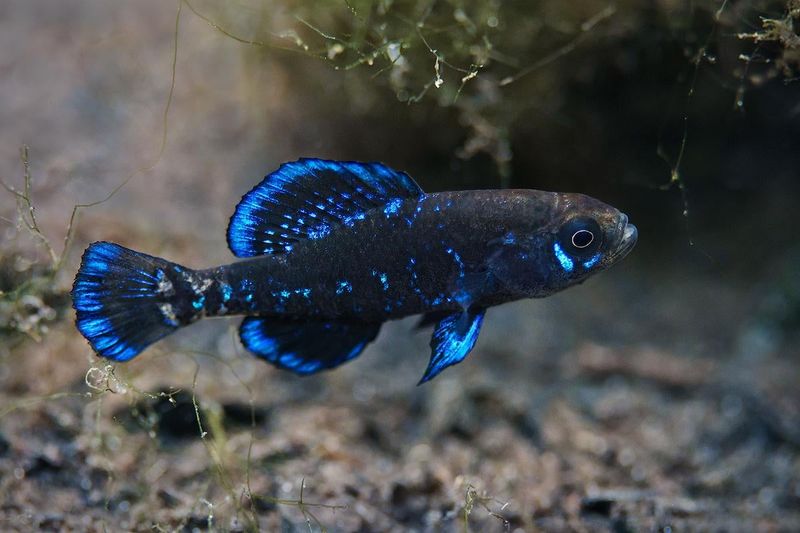
Small but mighty describes the Okefenokee Pygmy Sunfish perfectly!
I keep mine in a heavily planted 10-gallon tank where they display fascinating breeding behaviors. Males develop brilliant blue and red coloration when courting, creating a miniature light show among the aquatic plants.
These microfish thrive in blackwater conditions with slightly acidic pH and plenty of leaf litter. Feed them small live foods like daphnia and baby brine shrimp.
Their tiny size makes them perfect for nano tanks, bringing the beauty of Florida’s natural wetlands right into your living room.
6. Flagfish: Florida’s Patriotic Native
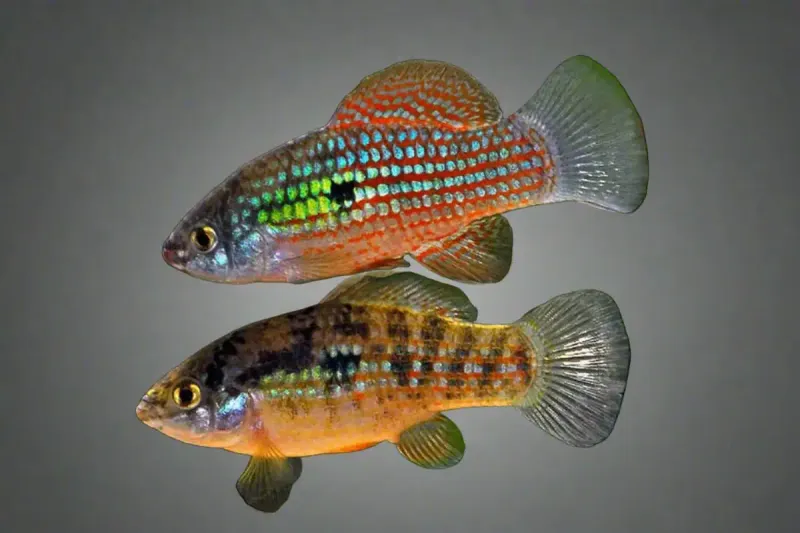
Perfectly suited for smaller setups of 10-20 gallons, they reach only about 2 inches in length. Their active, curious nature makes them endlessly entertaining to watch as they explore every inch of their habitat.
Provide plenty of plants and moderate water flow to mimic their natural spring environments.
These omnivores readily accept quality flake foods, frozen fare, and even enjoy grazing on algae. Their hardiness and stunning looks make them perfect for Florida-themed community tanks.
7. Elegant Firefish: The Saltwater Ballet Dancer
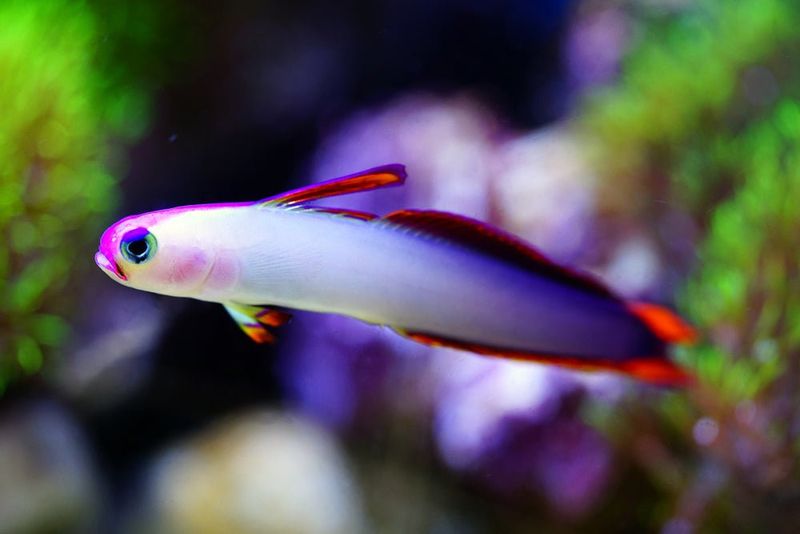
Their slender bodies feature a stunning gradient from purple-headed elegance to fiery orange tails.
These peaceful reef-dwellers are perfect for Florida marine aquariums, especially for beginners transitioning to saltwater setups. Despite their showstopping looks, they’re surprisingly hardy when provided stable water conditions.
Typically hovering near their preferred cave or crevice, they’ll retreat at the first sign of danger. Feed them small meaty foods like brine shrimp and mysis.
At only about 3 inches maximum length, they’re ideal for nano reef tanks where their brilliant colors stand out against live rock formations.
8. French Angelfish: The Majestic Reef Royalty
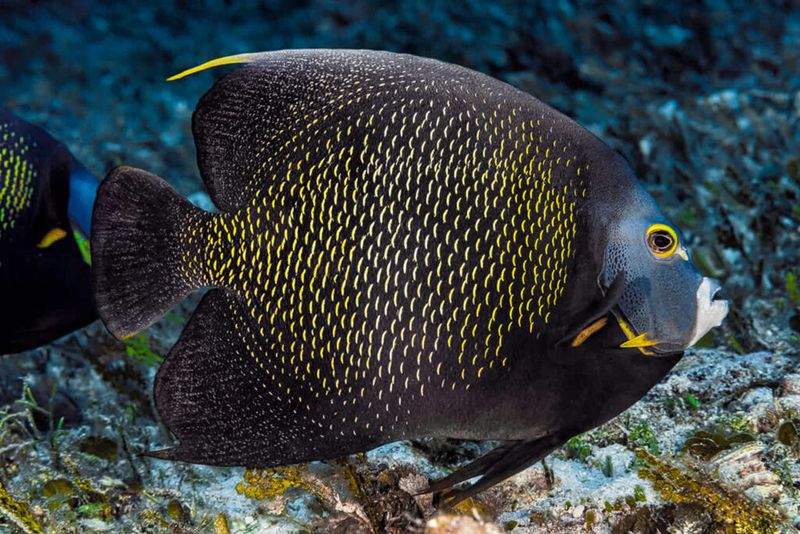
Regal is the only word that does justice to the French Angelfish.
These Caribbean natives thrive in Florida’s coastal waters and make spectacular centerpiece fish for larger marine aquariums. They require at least 100 gallons with plenty of swimming space and rock formations.
Omnivorous by nature, they graze on sponges and algae in the wild, but readily accept quality prepared foods in captivity. Pairs often bond for life – a touching display of fish fidelity that I’ve witnessed firsthand.
Their inquisitive personalities make them interactive pets that recognize their owners.
9. Gray Angelfish: The Chameleon Of The Reef
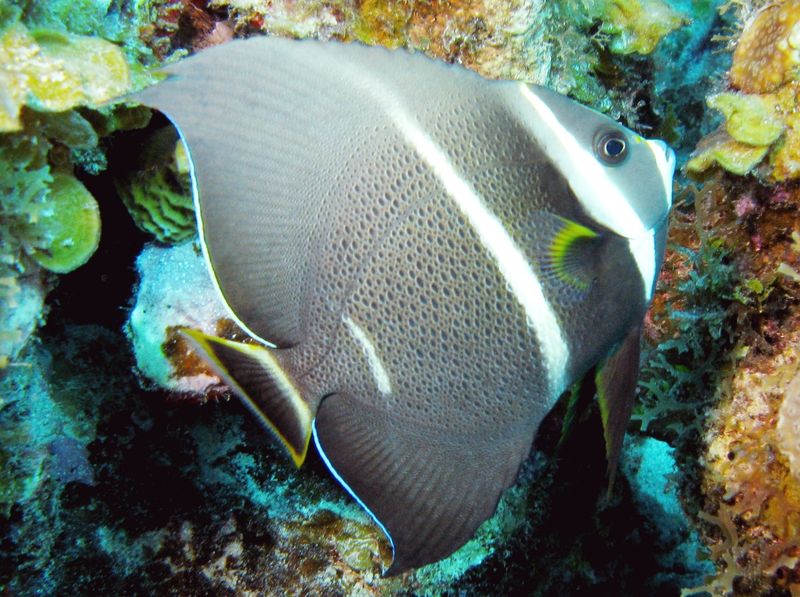
There’s nothing dull about the Gray Angelfish!
Masters of adaptation, they adjust their coloration based on mood and surroundings. Found naturally in Florida’s reef systems, they bring a piece of local marine heritage to home aquariums.
They reach about 18 inches in the wild but stay smaller in captivity. Provide a varied diet including marine algae, quality prepared foods, and occasional treats like chopped clams or shrimp. Their peaceful temperament makes them compatible with many other non-aggressive reef fish.
10. Lionfish: The Controversial Beauty
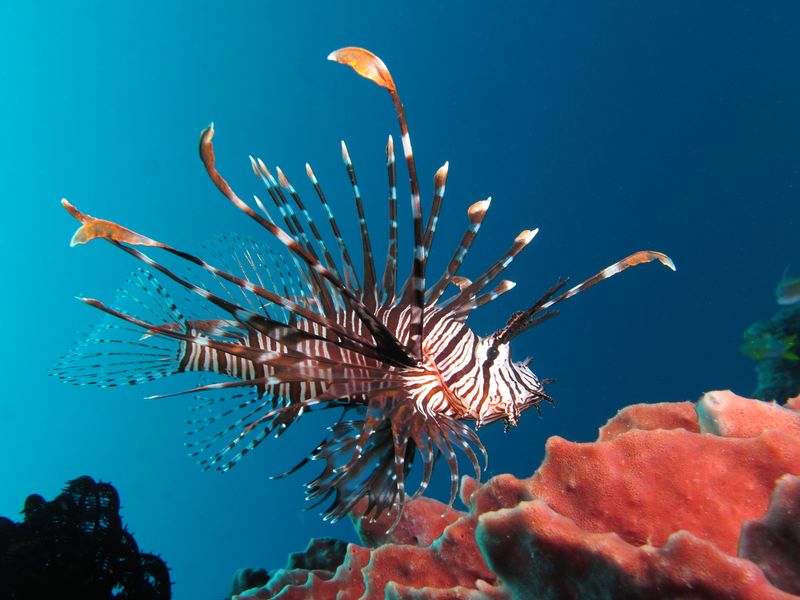
While controversial as invasive species in Florida waters, keeping them in home aquariums is actually encouraged as a conservation measure. Their predatory nature means they need a species-specific tank or carefully selected robust tankmates.
Reaching 12-15 inches, they require tanks of 75+ gallons with excellent filtration. Feed them meaty foods like silversides and shrimp, using feeding tongs to protect yourself from their venomous spines.
Despite their fearsome appearance, they often develop puppy-like recognition of their owners at feeding time.
